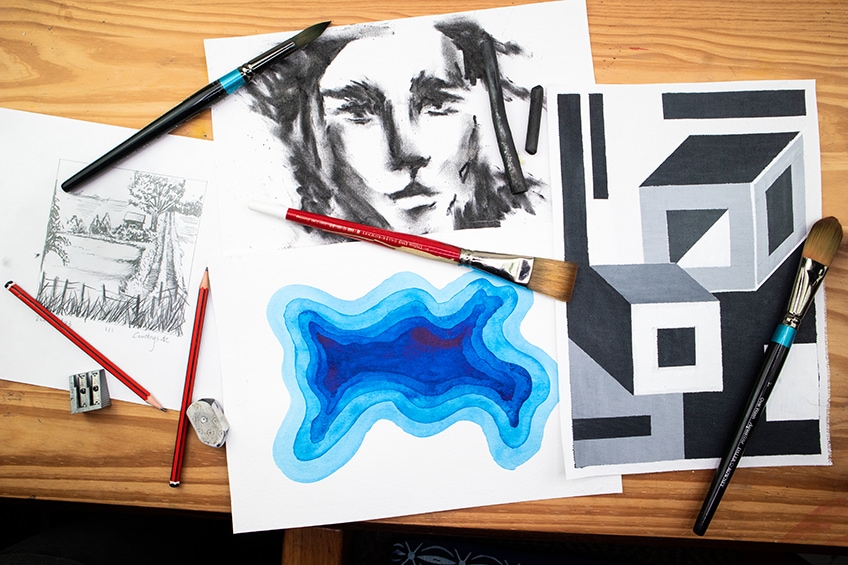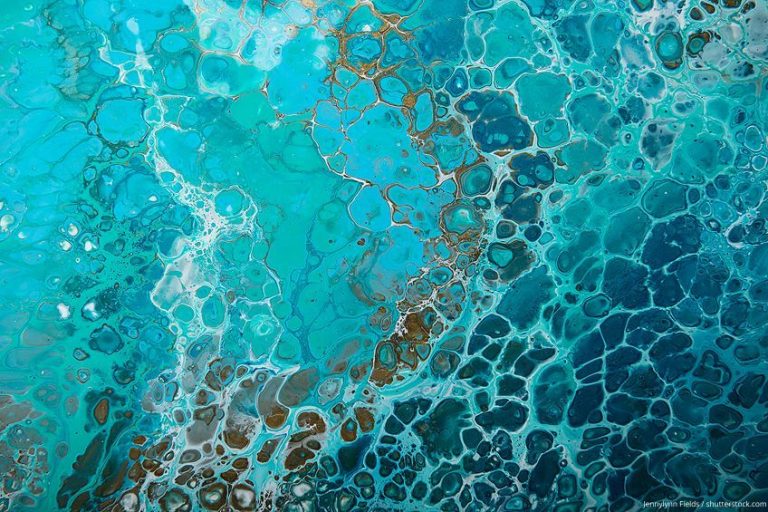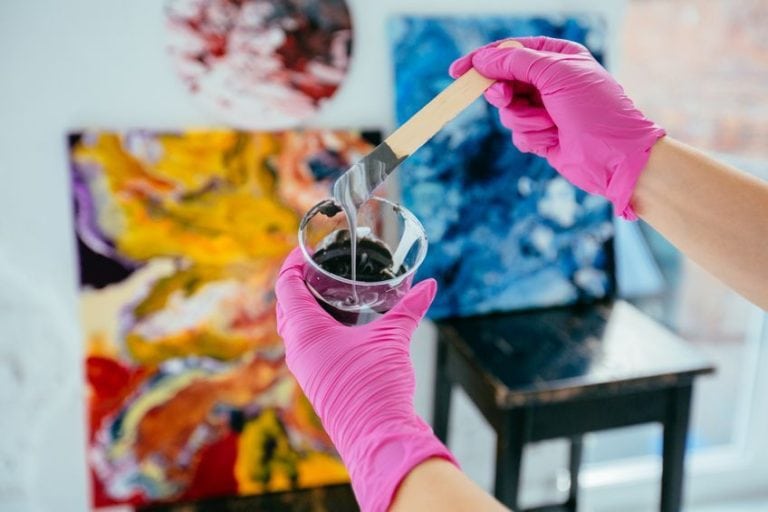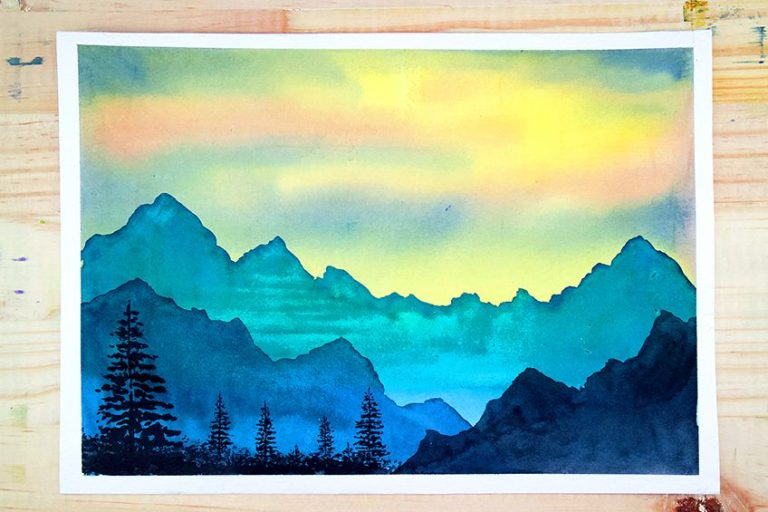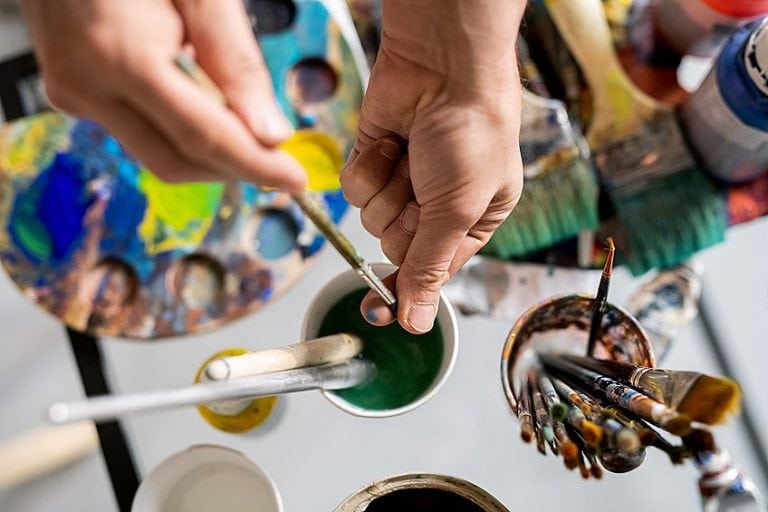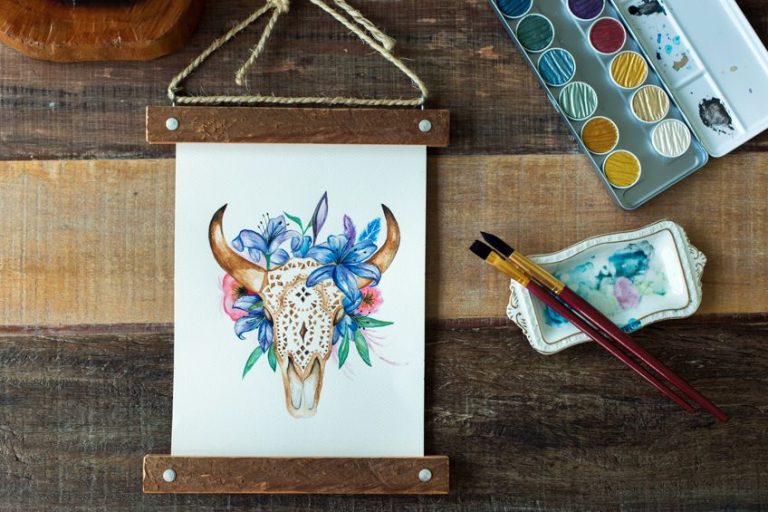Abstract Painting Ideas – Drawing Tutorials for Abstract Art Designs
Abstract art ideas can be quite a confusing exercise as it can be really difficult to understand where to start. The lack of direction can seem like a disadvantage but in fact, it is rather an advantage. The reality is that we can draw inspiration from the world around us in all sorts of ways. For instance, looking at nature can be a great source of inspiration, whether it is objects, shapes, colors, or even sounds. The intention is to allow yourself to let go of expectations and allow a piece of work to form as you go along. The world of art-making has come a long way and the approach to modern abstract painting ideas can be inspired by the most unsuspecting sources. In this tutorial, we will look at a few simple ideas on how to create abstract art designs with a few simple tools and whatever is around us.
How to Make Abstract Art Designs
In this tutorial, we will be learning how to create interesting abstract artworks using four different mediums. With each medium, we will look at some simple modern abstract painting ideas and see how we can use both acrylic and watercolor to create interesting abstract art designs. We will do the same with charcoal and pencil, seeing how these two drawing mediums can be used for interesting abstract drawing ideas.
For painting, we will explore making minimal Bauhaus-style paintings using acrylic and masking tape. For watercolor, we will learn a basic layering technique that can be used to create interesting three-dimensional abstract art designs. For drawing we will work with both pencil and charcoal, exploring some simple abstract portrait drawings and photography-styled quick drawings. Now that we know what to expect, we can get going.
Abstract Geometry-Styled Acrylic Painting
Abstract art is really up to interpretation and subjective conception, which means that we can create anything we want. Perhaps one of the most popular genres of abstract art designs that have become prolific over the past century is geometric-styled abstract art designs. From artists like Escher to movements like Bauhaus, geometry has been a massive genre of abstraction within the arts. Let us take a look at how we can create our own three-dimensional geometry-styled abstract art designs.
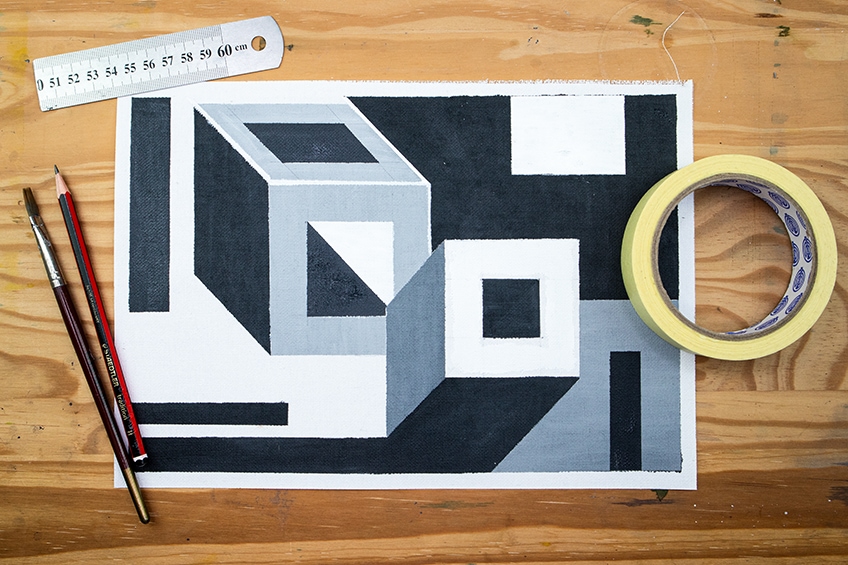
Using Masking Tape as a Tool for Painting
One of the most useful tools for creating beautiful straight edges is masking tape. When creating a geometry-styled painting, using a pencil and ruler is essential to establish shapes. However, from there using masking tape to cover sections of various shapes can be an effective way to create clean crisp lines.
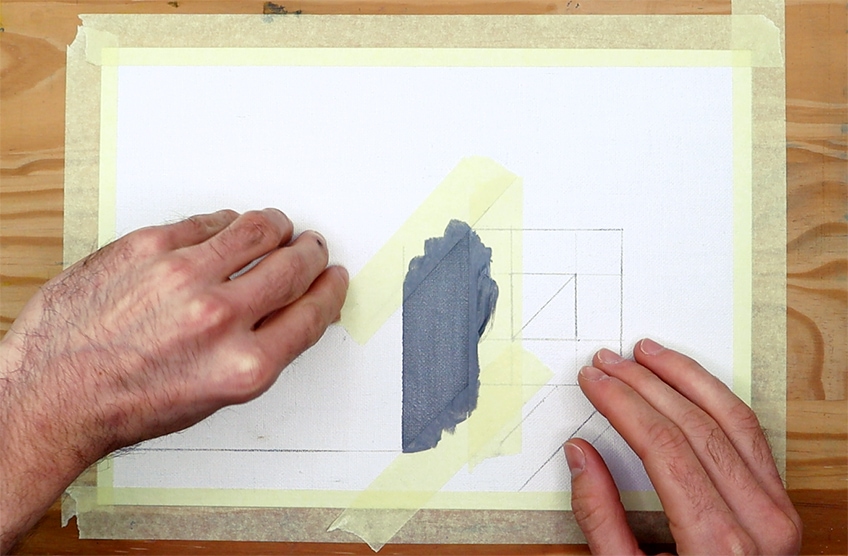
Masking tape works well with acrylic paint, as it can be an effective way of sectioning off areas within your abstract painting. Masking tape works particularly well when creating sharp-edged shapes, and is much easier than attempting to [paint a straight line free-hand.
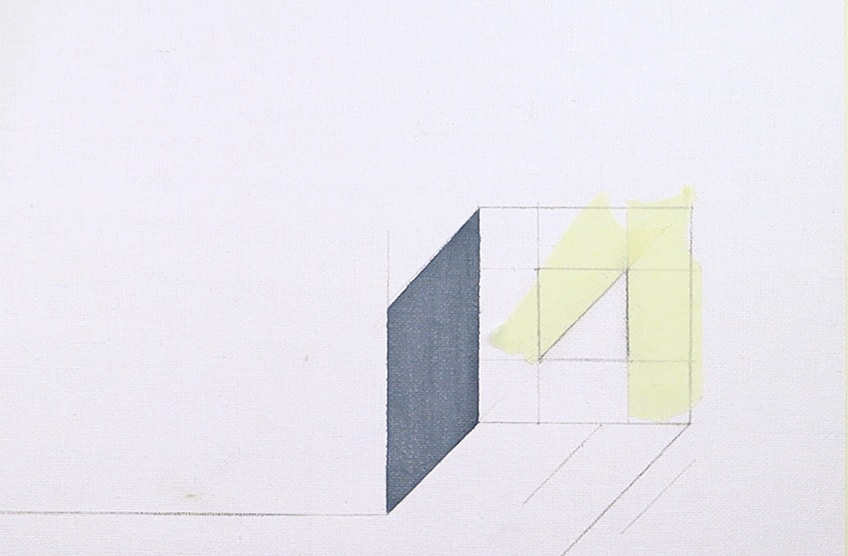
Using Light and Shadow as a Guiding Principle
When creating beautiful geometric shapes, you want to make sure you use a ruler and pencil to establish your shapes as you go. Don’t worry about drawing an entire image, but rather allow your image to unfold as you paint. However, a concept to keep in mind as you paint is the concept of light and shadow.
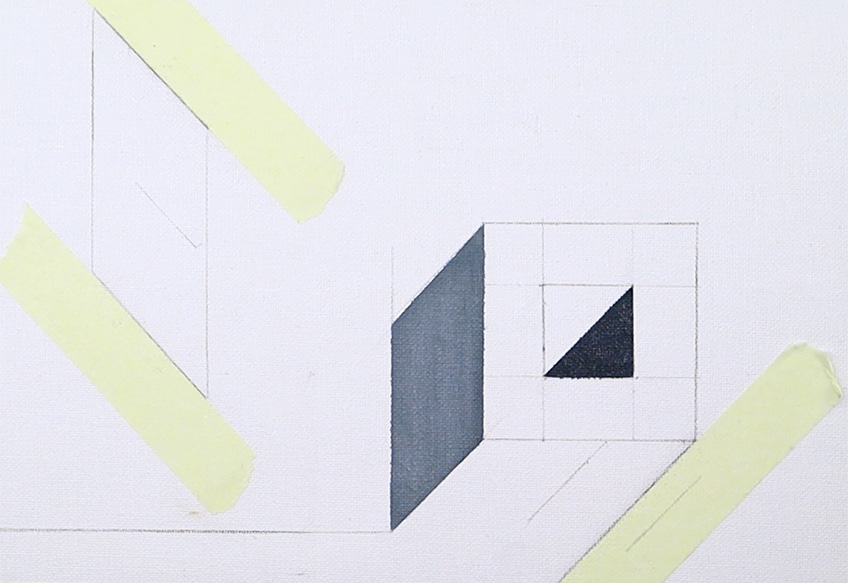
There is generally a rule of three tonal values when it comes to creating three-dimensional shapes. This means, we essentially want to have three tonal values present within the shapes we paint to create a three-dimensional effect. We can allow ourselves to play around with this concept as we paint.
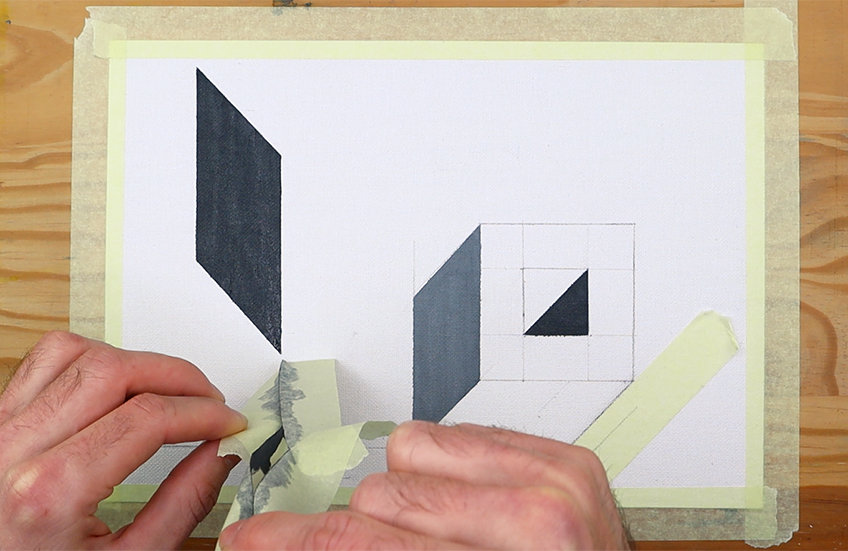
We can use masking tape in this case to section off different planes within our shapes, which we then can paint different tonal values. in the case of this tutorial, consider using a monochromatic styled approach, this way you can work with a full spectrum of a single color.
The rule of thumb for three-dimensional shapes is that if you use three different tones of the same color in a single shape, it will create a three-dimensional effect. What is great about abstract art is that we don’t necessarily need to keep it consistent.
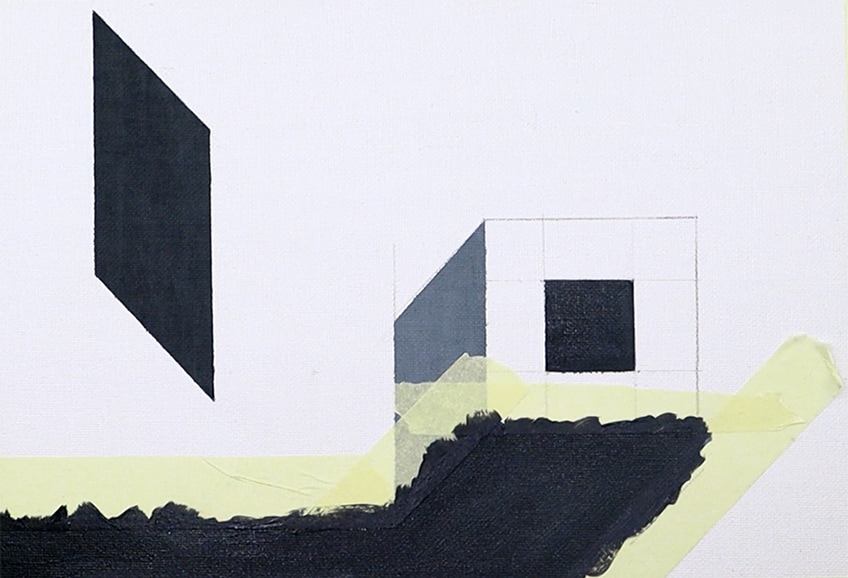
Allow yourself to play around with how you represent three different tonal values in different shapes. What makes the work abstract is the strange use of different tones placed in different sequences.
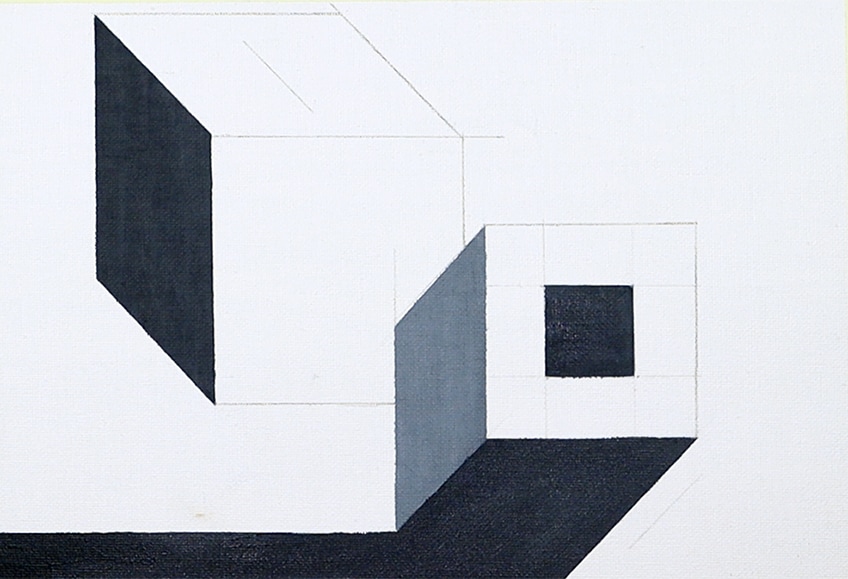
simply using the rule of three tonal values in a single color is enough for you to create strange shape variations. This means, that if you paint one shape using three colors in a particular set, try to rearrange the color sequence for a new shape, and so on.
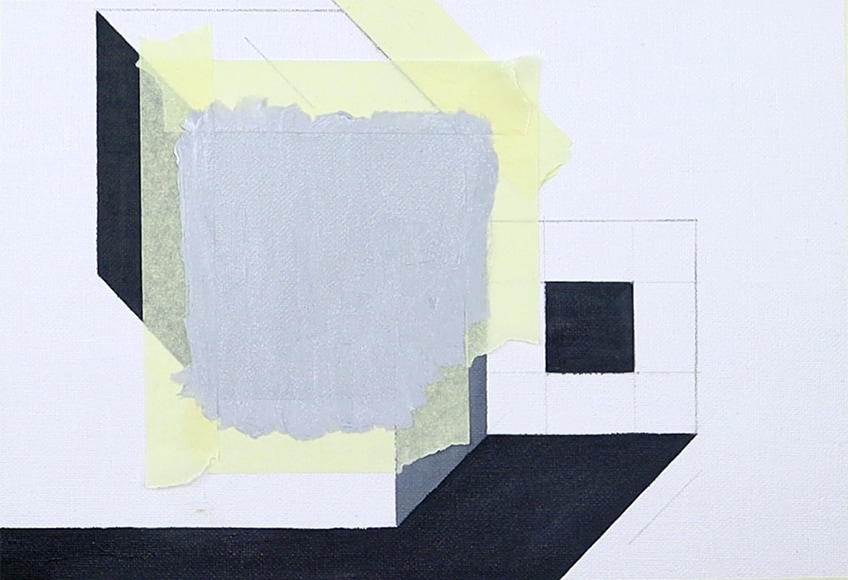
Playing Around With Composition
Once you understand the process of creating shapes, using masking tape to section areas off in the shapes, and lastly, tonal values, you then can use those skills to create compositions.
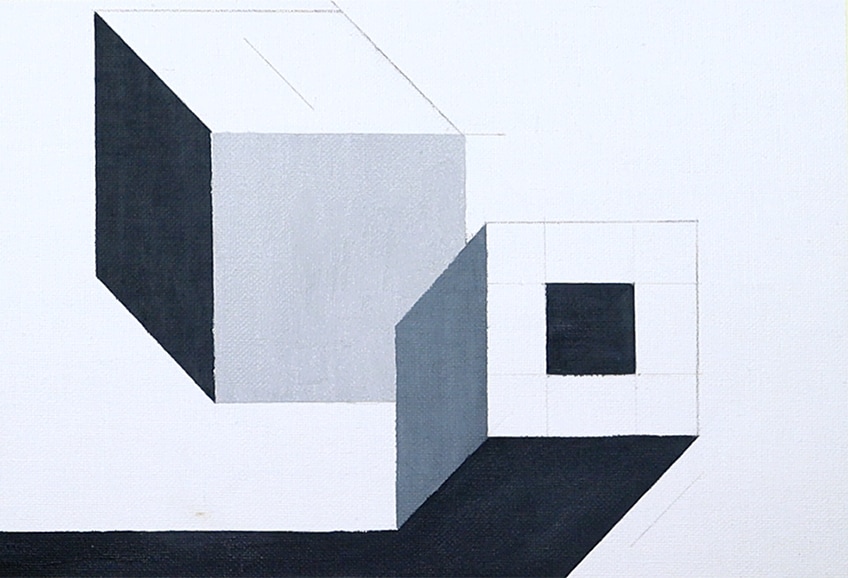
In one way, you could approach the creation process quite systematically by drawing first and then painting. That being said, there is a beauty in allowing the image and composition to unfold as you go.
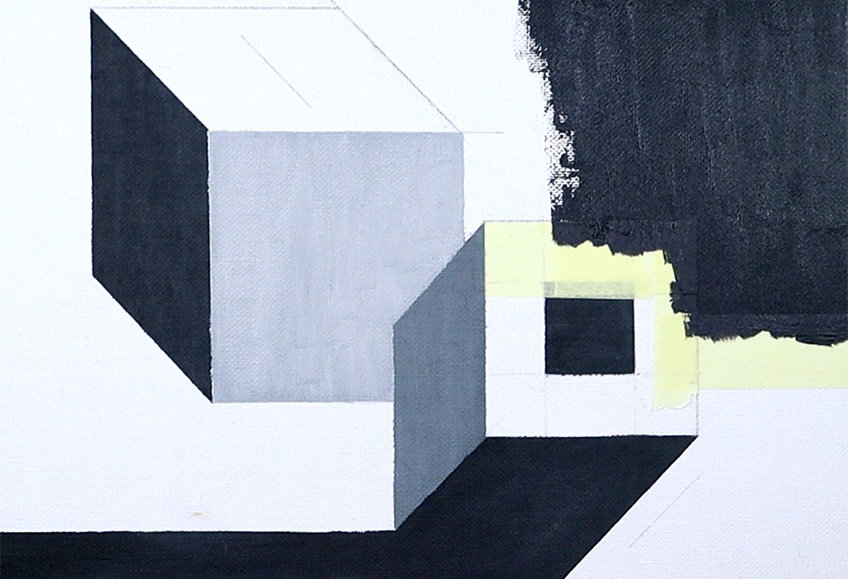
Having drawing marks works well as a driving force, but using masking tape and the concept of color combination, is another great way of establishing your geometric-styled marks within your artwork.
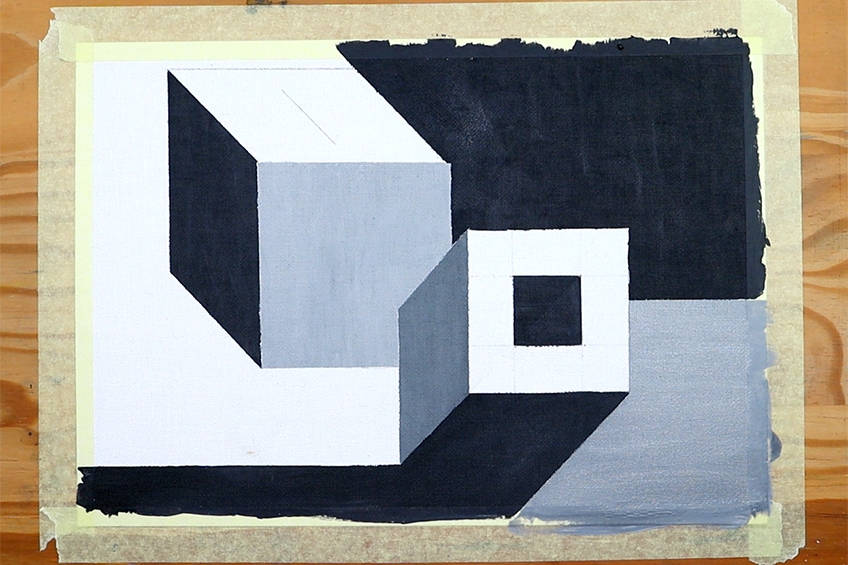
This means that as you go through your painting, you can use masking tape to create new shapes as you go. you can also allow yourself to add different tonal values into already existing painted sections of your artwork.
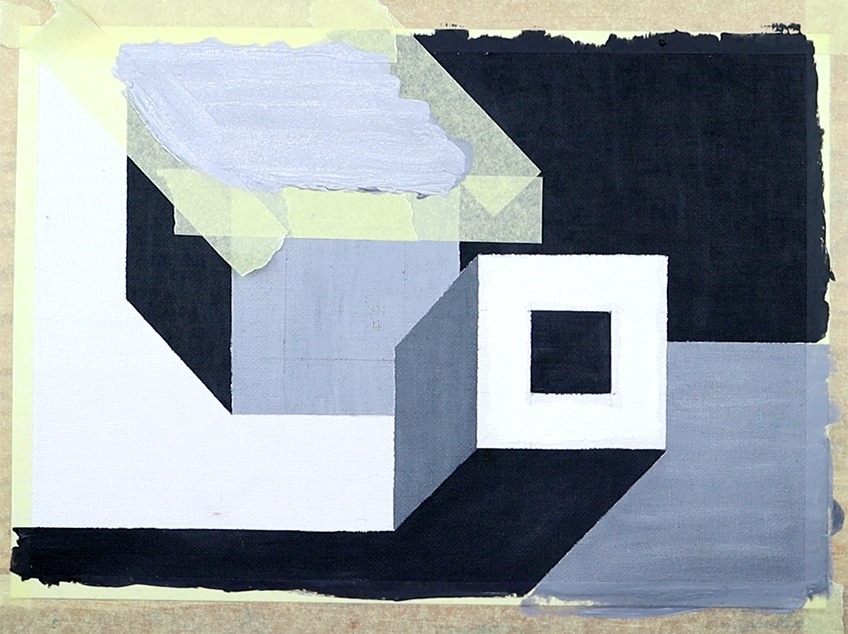
The reality is that there are no rules, the most important things to remember are light and shadow as guiding principles. This allows you to be free with creating any shape and form you would l;ike, whilst using light and shadow as a way of creating distinctions within your shapes.
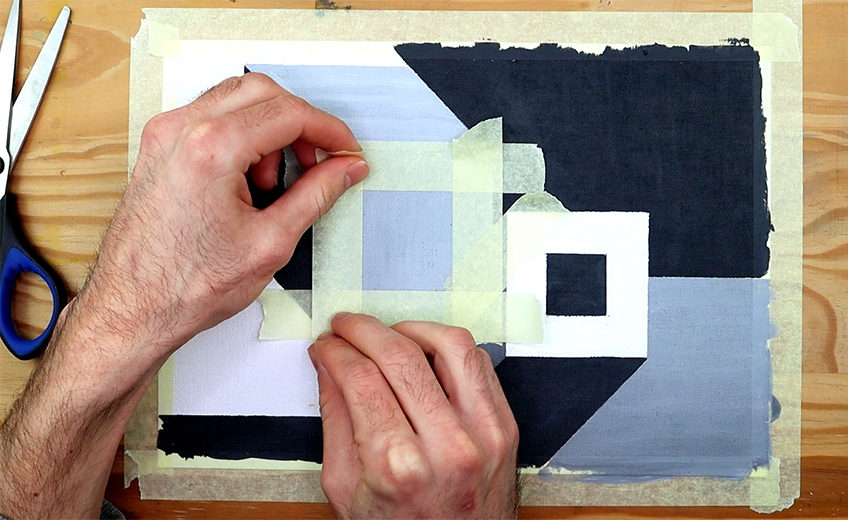
Now that you know how to use masking tape as a geometry painting tool, as well as the rule of three for light and shadow in three-dimensional shapes, feel free to play around. These are simple tools and techniques that can be used to create unique and interesting geometry-styled artworks.
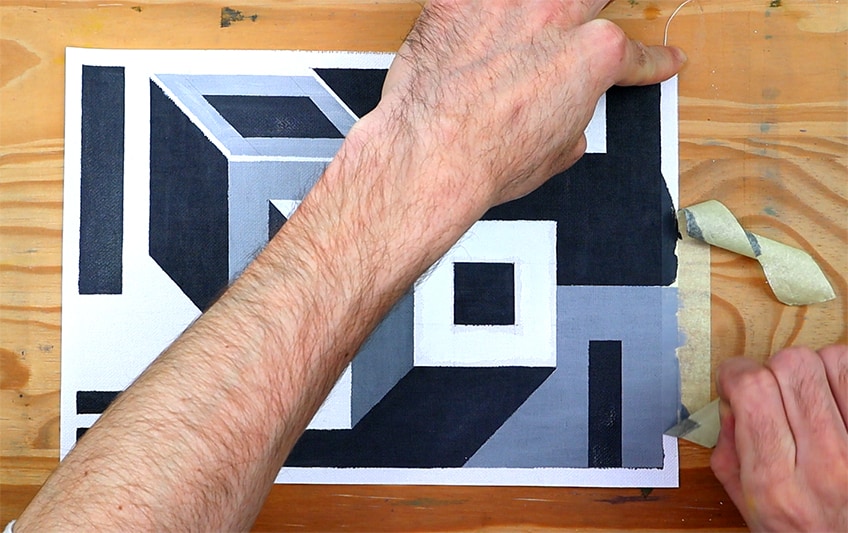
Using these simple abstract painting techniques with acrylic paint and masking tape, you can create elaborate and complex abstract painting designs. Allow yourself to play around and explore how much you can create using these simple tips and tricks.
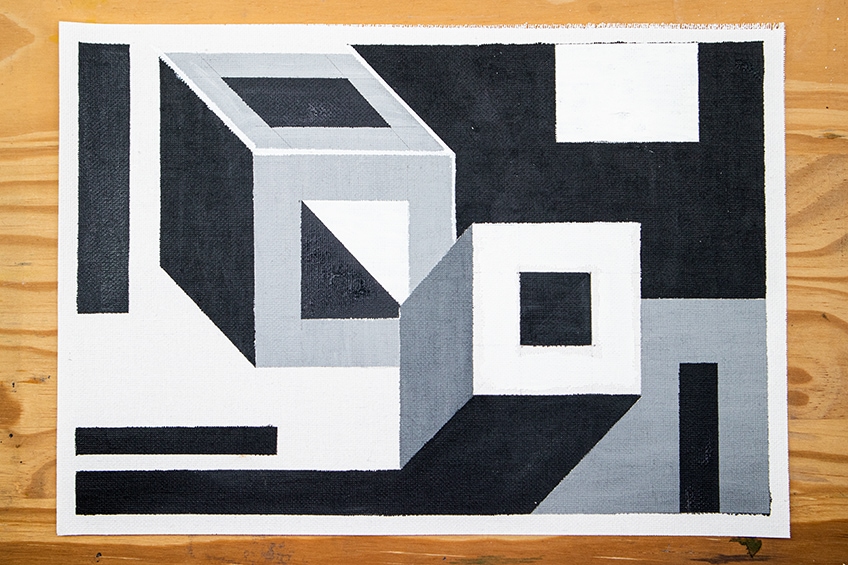
Abstract Layered Watercolor Painting
Watercolor is always a tricky medium and can be used in all sorts of ways; however, one of its greatest strengths is its layering ability. Learning how to create simple layers with watercolor is a great abstract painting technique that can be used in all sorts of ways. With a little bit of patience, we will find that we can create a unique effect of depth and dimension.
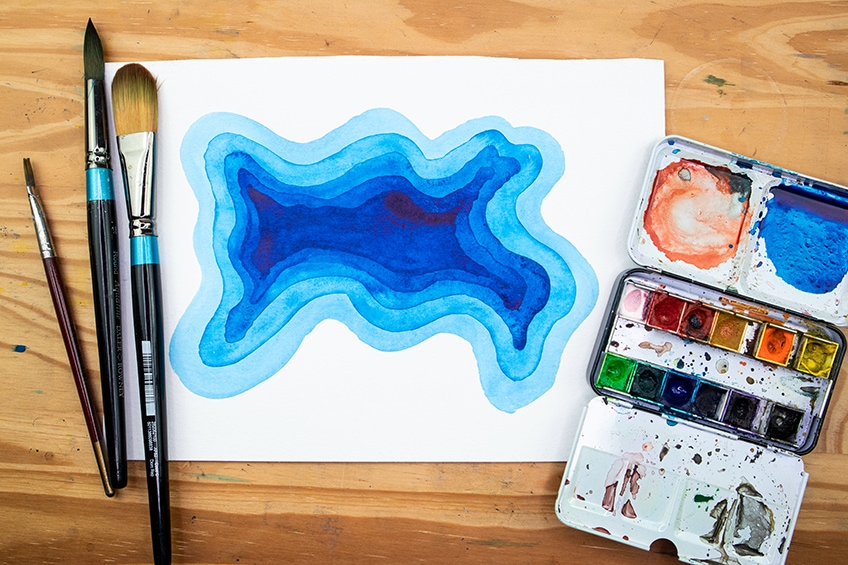
Using Washes to Create Depth and Dimension
To simplify the process, let us use a single wash of blue. The intention is to make a mix of blue with slime watercolor paint and some water. From there apply the blue paint onto watercolor paper, preferably in a strange shape.
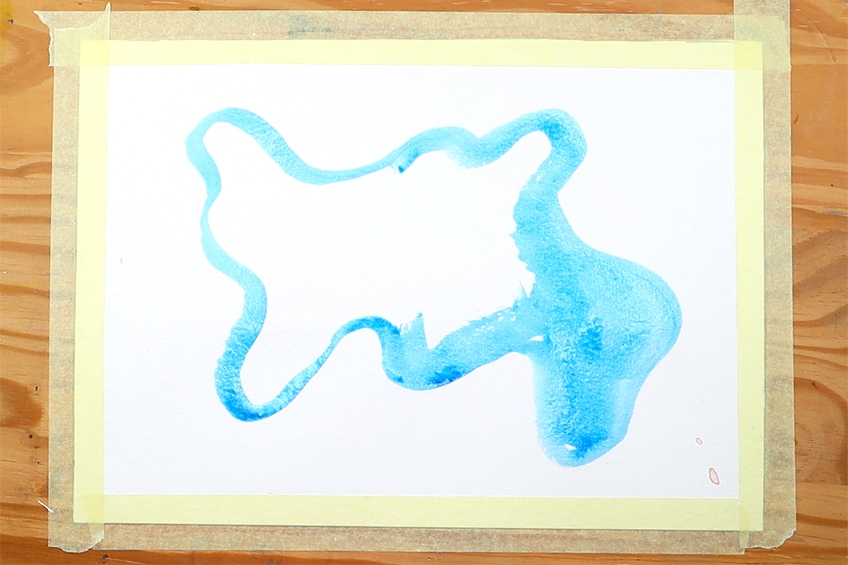
Make sure that you keep the first wash of blue as evened out as possible, making sure there is consistency in the application. Make sure you keep it relatively light so that each layer can’t get darker as you stack them on one another.
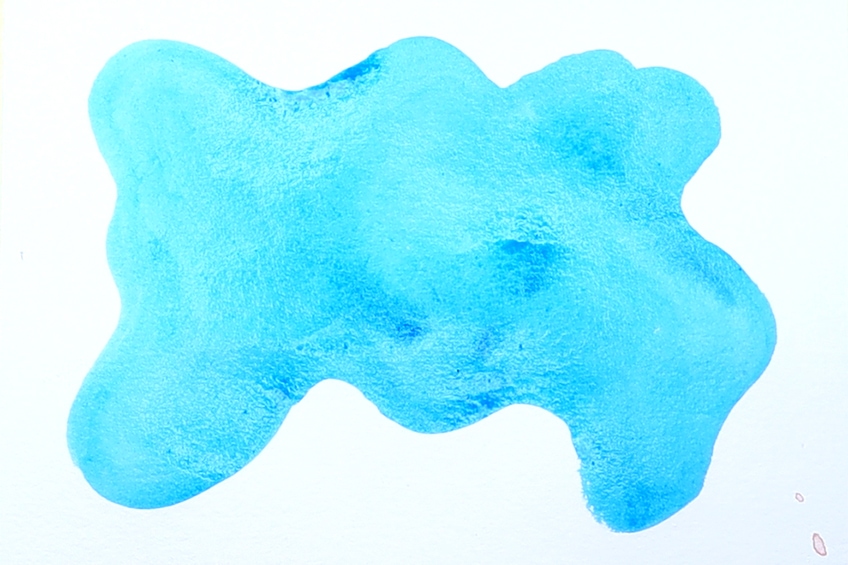
We will then move on to adding another layer on top of the first one. We want to make sure that the previous layer has completely dried before adding the next layer on top.
The intention is to make sure each layer has completely dried before adding the next.
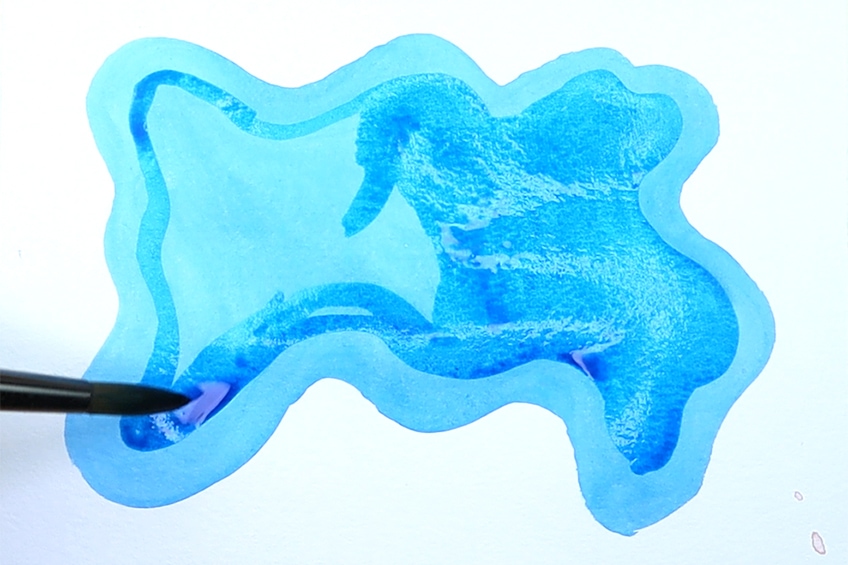
Keeping the Same Wash Throughout Each Layer
The skill with effectively layering watercolor is that you keep each wash of blue the same. We don’t need to worry too much about darkening each layer of paint as we stack them. The magic of watercolor is that each layer will naturally darken simply by being layered on top of one another.
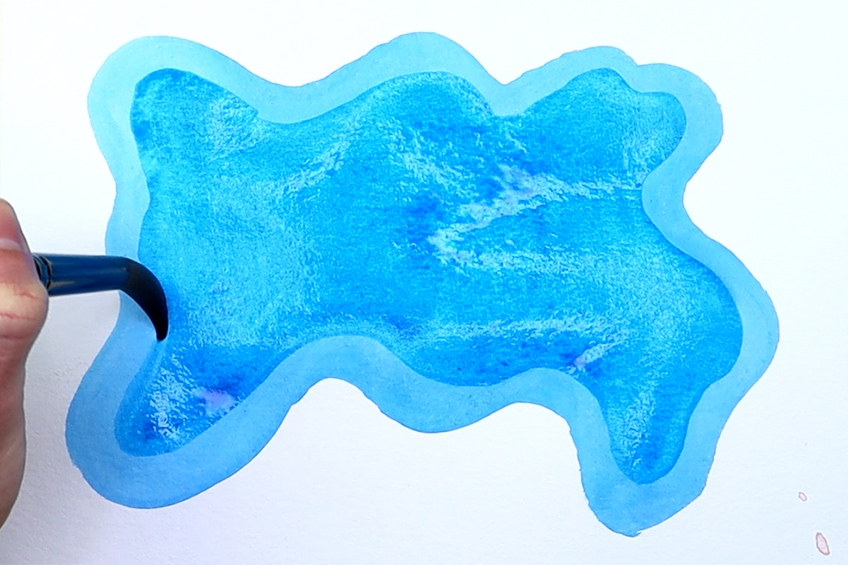
Keeping Space Between Each Layer
As we add each layer, we want to make sure that we also paint inside of the previous shape. By doing this we leave some space between the last layer, and keep doing this until we have added as many layers as we would like.
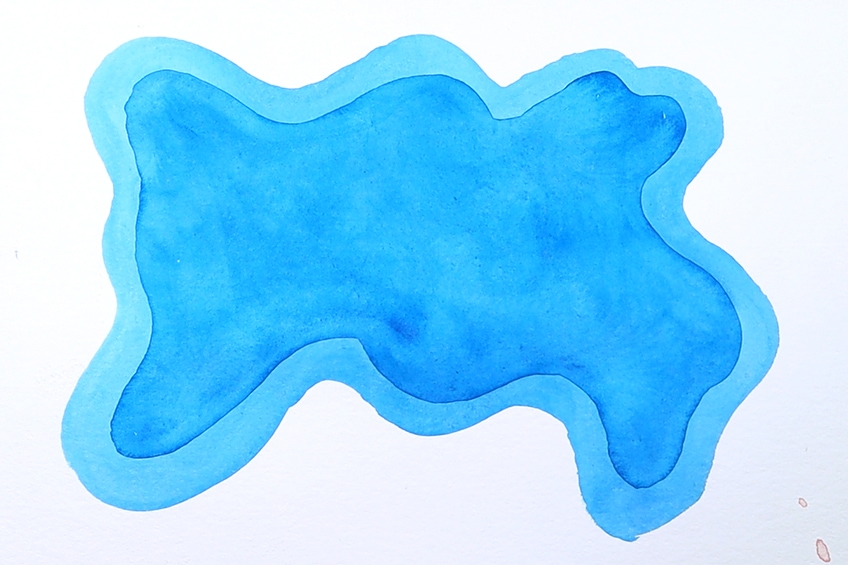
As you paint in the next layer every time, the previous layer must be dry completely. You want to also make sure you don’t press too hard and keep the layer of paint as even as possible.
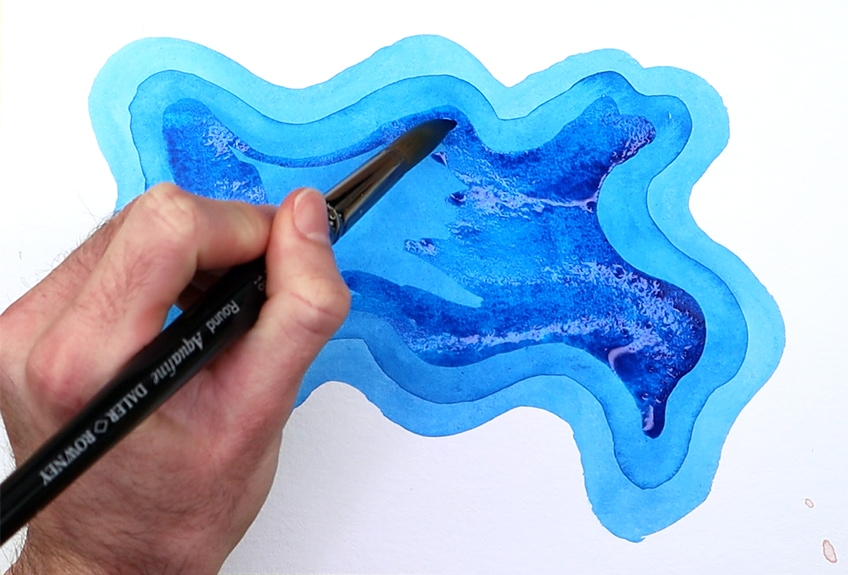
Being Patient
Most importantly, we want to be patient when creating layers with watercolor. Layering watercolor is a patience game, it can be quite tempting to paint before the previous layer has dried completely. But make sure you leave it to dry before adding in another layer.
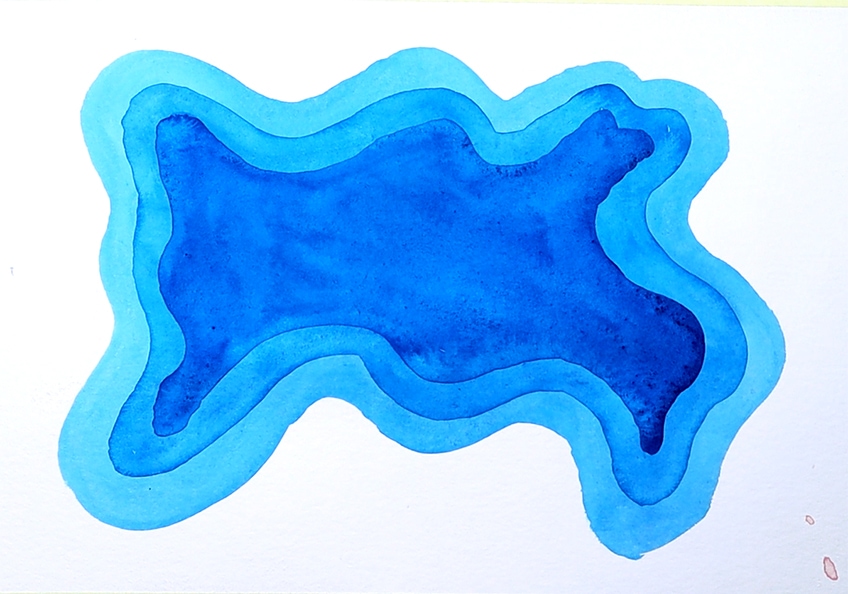
From there you can keep adding layers which will result in an interesting depth effect within the painting. This technique can be used in all sorts of ways and is a great technique within the watercolor painting genre.
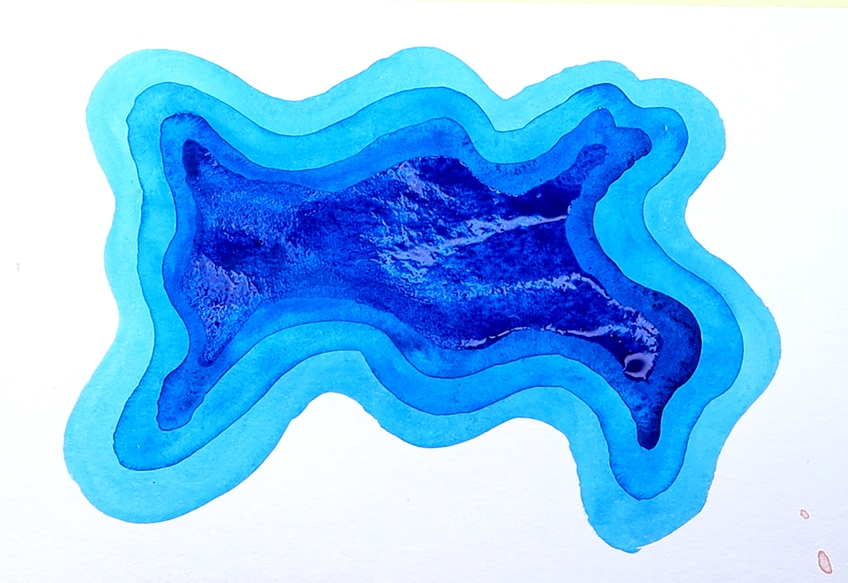
Allow yourself to keep adding layer over layer until you get to a point where the smallest and top layer is dark. This is also a technique that can be used through methods of painting with watercolor.
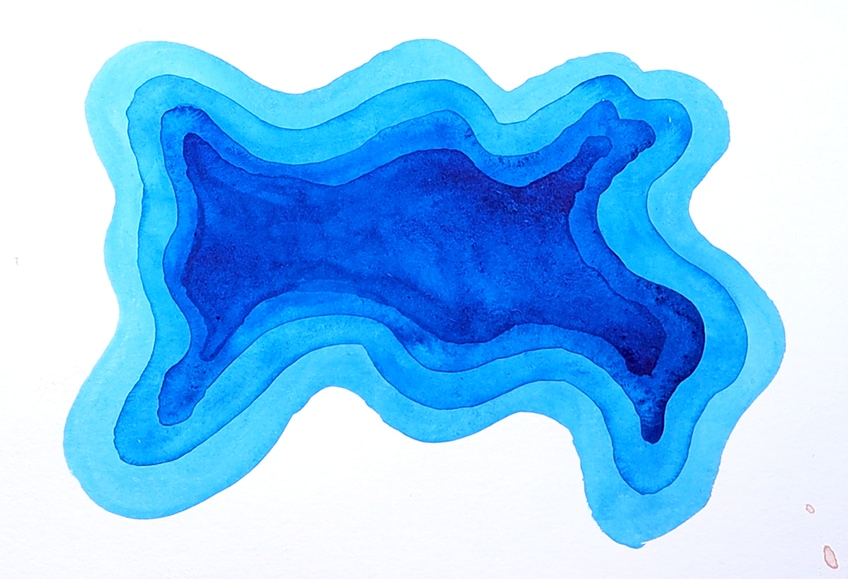
You could use this layering technique in all sorts of painting ideas, and it can be applied to smaller areas as well as larger areas within a painting to give spaces, objects, or characters a more dimension.
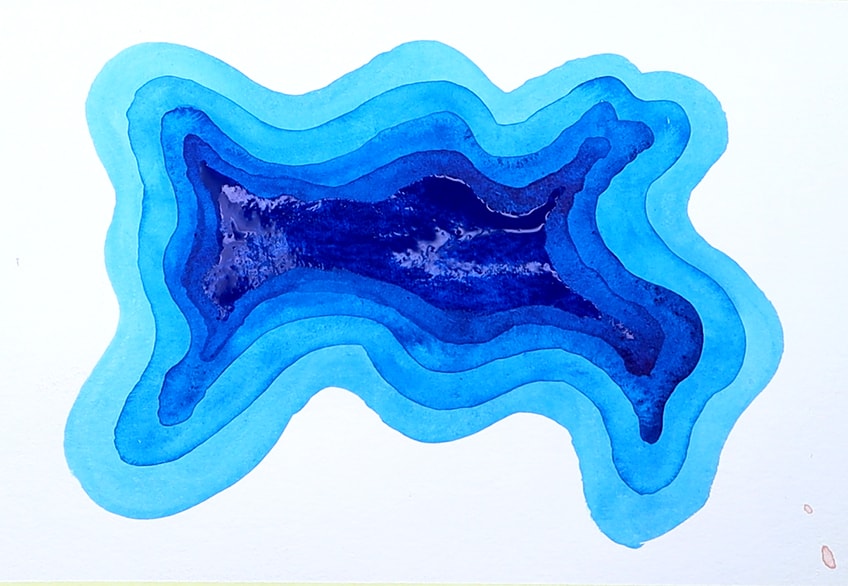
But that is essentially it! Just remember to keep your washes the same and light, as well as to be patient and wait for the paint to dry. This is an essential painting technique that can be used in all sorts of interesting watercolor abstract art designs.
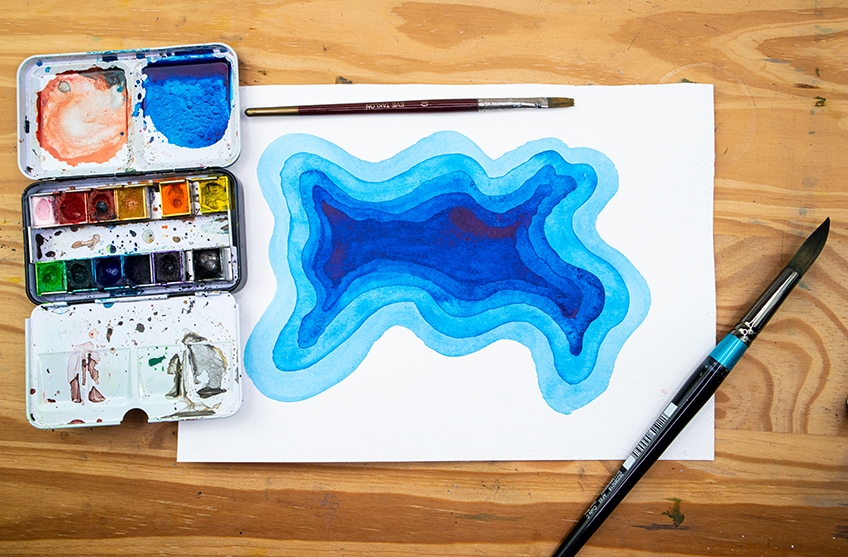
Abstract Portrait Drawing With Charcoal
Portraiture often scares people away because it seems as if it is an insurmountable challenge. In some cases, this might be true; however, when it comes to charcoal drawing, it is the complete opposite. Understanding the basic placement of features within a head can allow you to play around with charcoal to create unique abstract portrait drawings without any references.
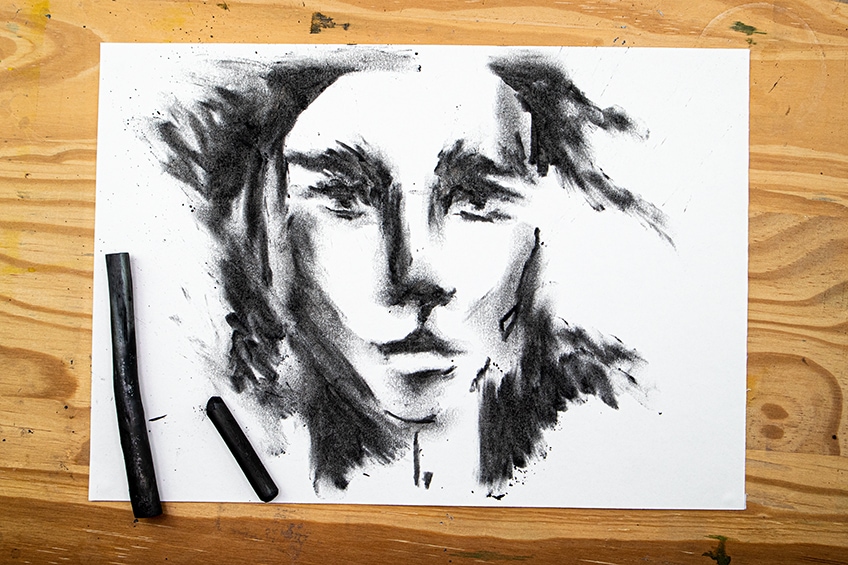
Understanding the Basic Feature of the Head
Making abstract charcoal portraits is fun and easy because we do not need to be precious about the details. However, making sure to have a fundamental understanding of the head and how features fall on the face is a helpful guiding force.
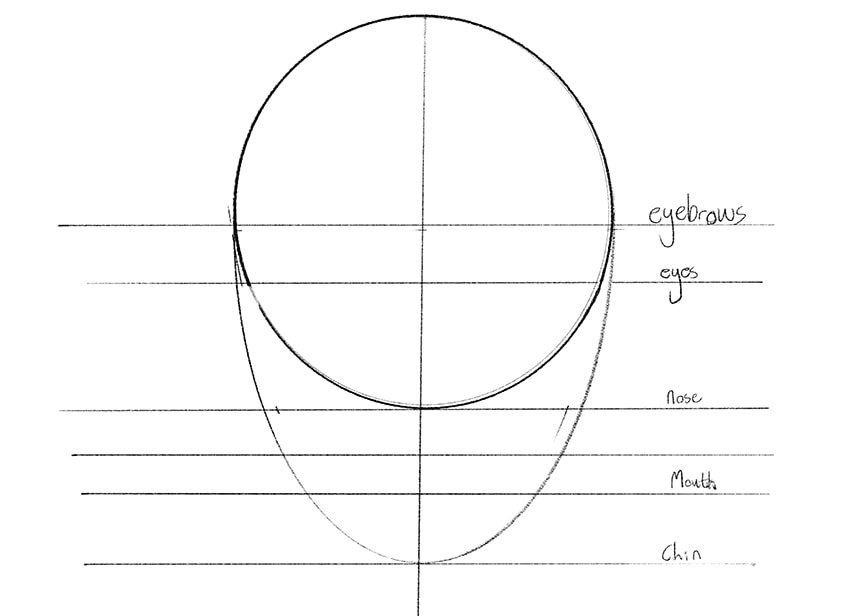
Working in Features
Once you have gained some insight into the featured placement, you can begin by sketching out generic shapes for each feature of the face. The intention of creating abstract charcoal portraits is to understand general shape more than it is to capture finer details.
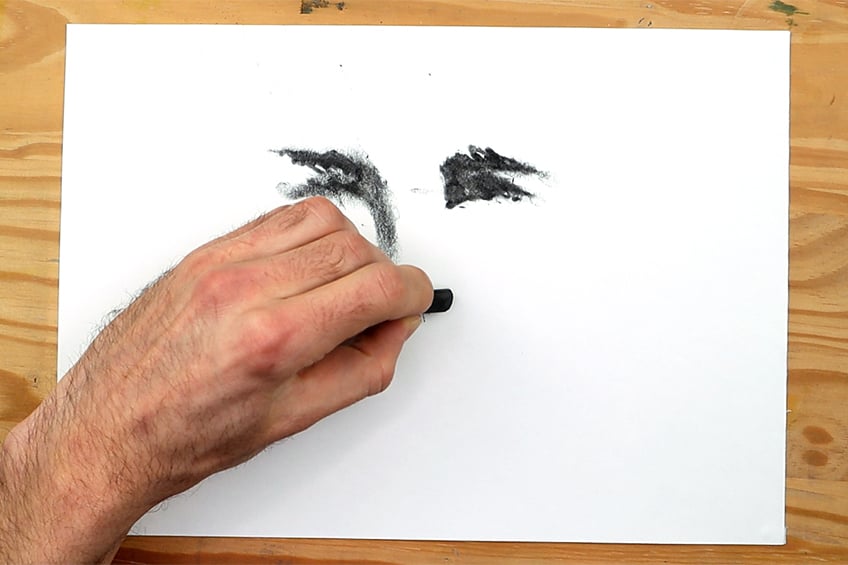
This means that we want to allow the general shape of each feature to guide the drawing process. For instance, we know that the eyes have a horizontal structure, whereas the nose often is a simple triangular shape.
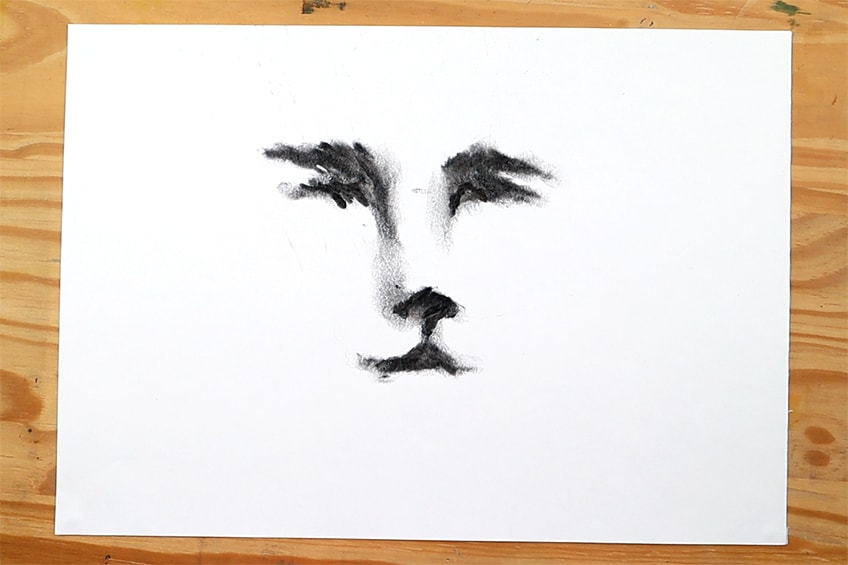
When we break down the face into fundamental shapes, we can then apply these shapes to the general face formation. The intention is to know the placement and general shape, which then will allow you the freedom to morph and shape the features.
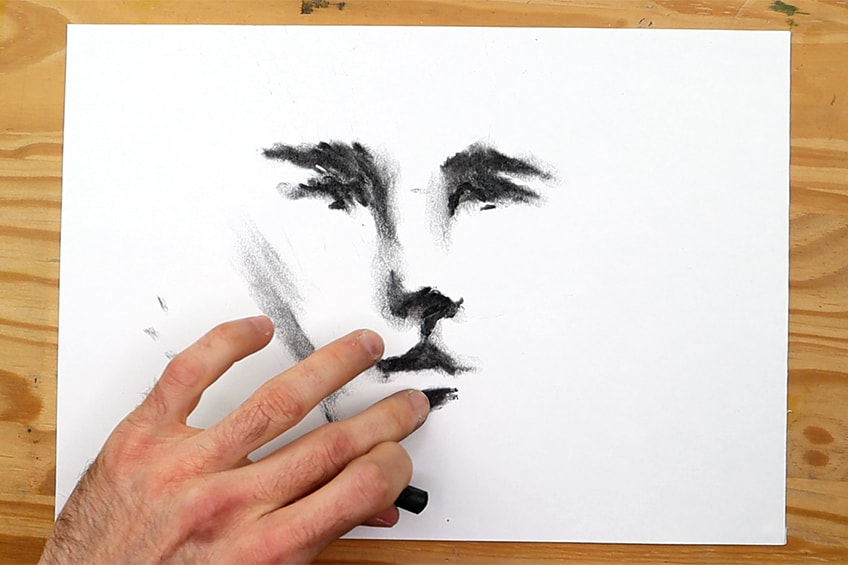
Reshaping and Morphing
Once we know the areas in which the features of the face can be placed, we then can play around with smudging and reapplying marks. Knowing the correct spaces for feature placements allows us to create all sorts of faces by adding different shapes using charcoal.
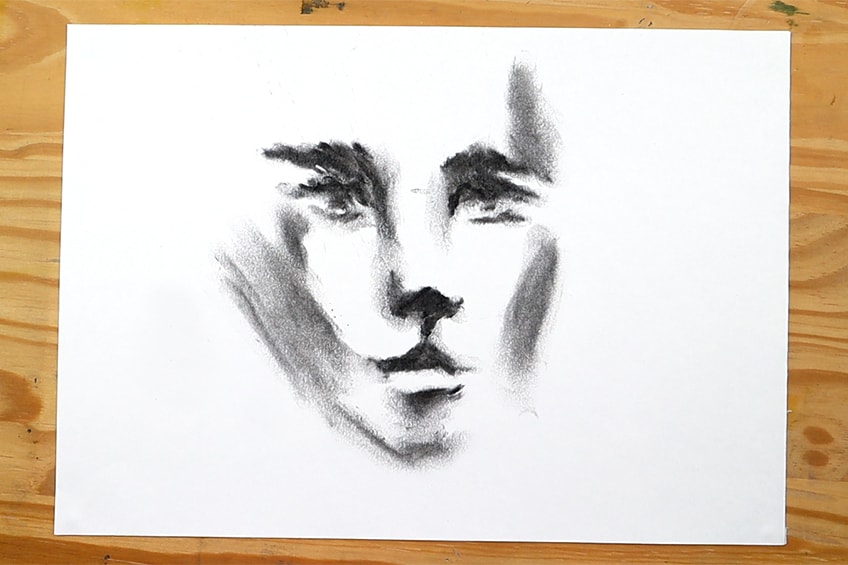
Charcoal’s highly contrasting effect on the page will often allow the results to have this shadowy effect on the face. Using its easily smudgeable quality allows you to create different tones, shape the face, and create contrast in the face.
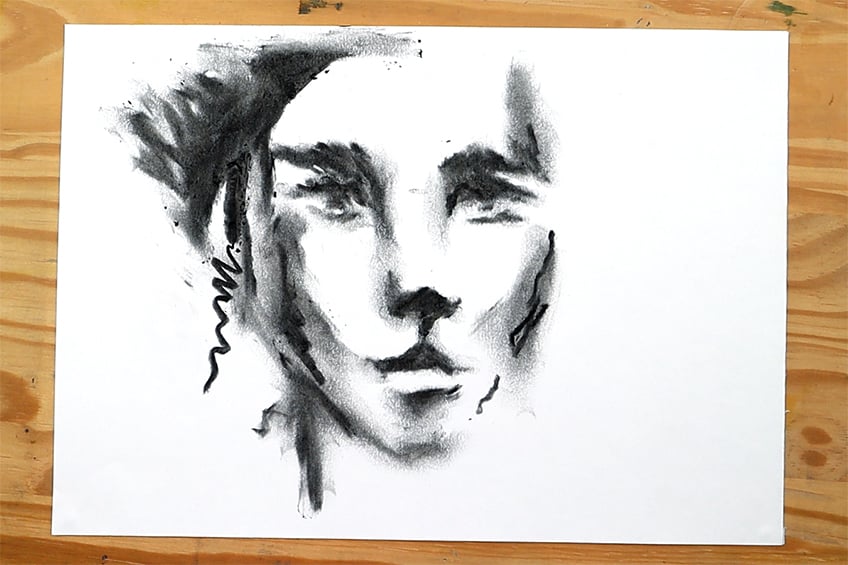
By smudging and redrawing over and over, you will slowly begin to create a unique abstract portrait. Simply by understanding the placement of the facial features and their basic fundamental shapes you can create different features within the face.
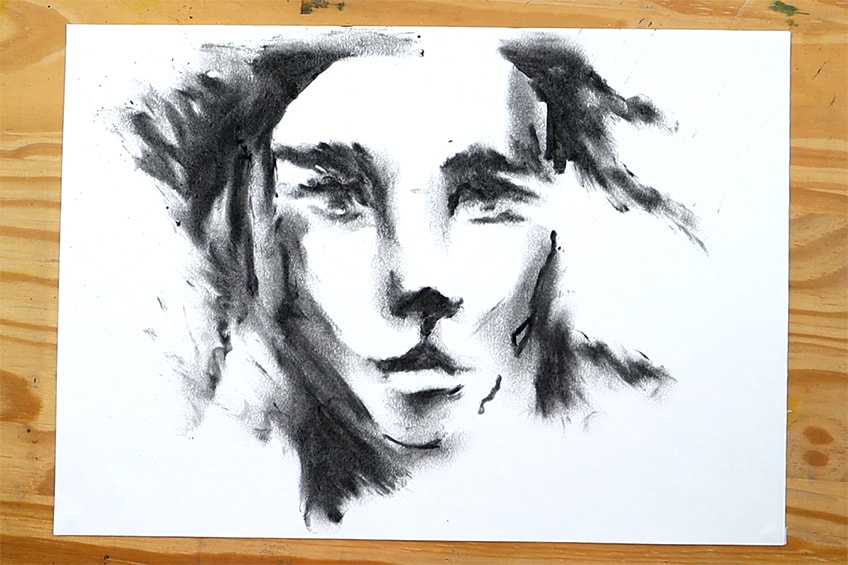
The portrait having an abstract quality also allows us to play around with how we add the features. This means that we don’t need to always fully draw features, but rather can make simplistic marks that suggest their form and placement.
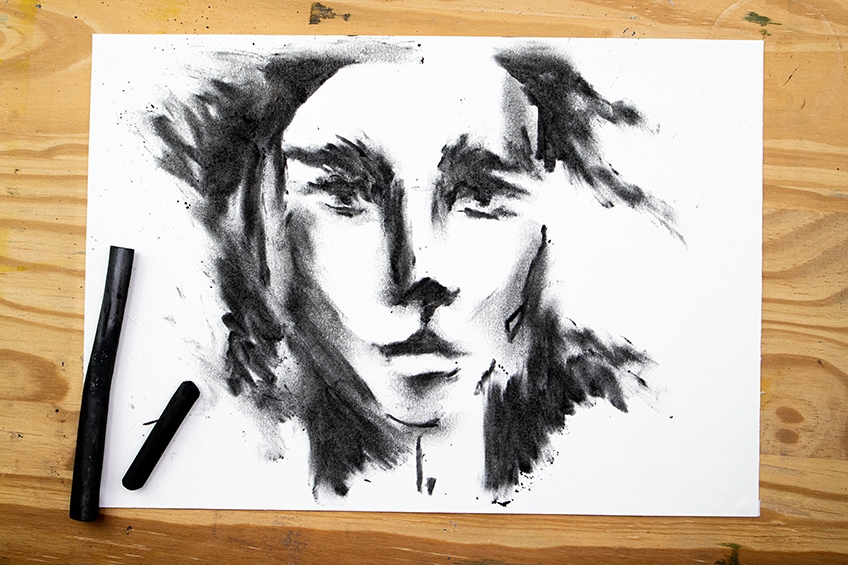
Practice and Repetition
These portraits also can be done fast or slow, which can both result in a beautiful abstract portrait. As long as you keep in mind feature placement, and their fundamental shapes, you then can create different variations of abstract charcoal portraits.
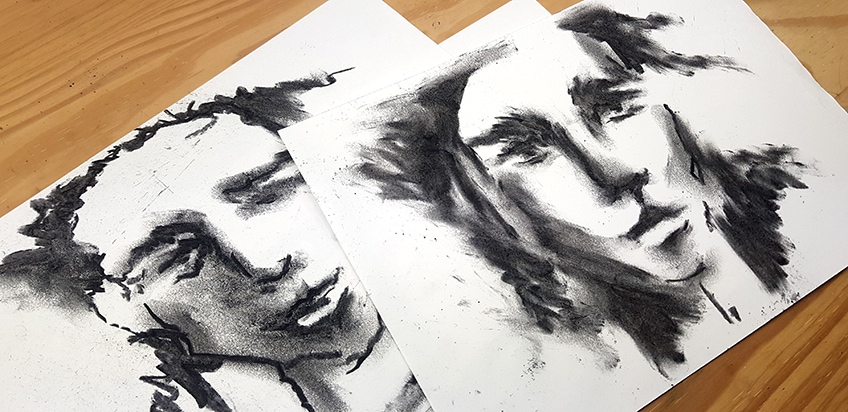
Quick Photography-Styled Landscape Drawing
Quick drawings have become a popular genre of abstract art due to their accessibility and their playful nature. Art should be playful and accessible, and this form of art-making is a great abstract art design that can be done in a notebook, diary, or any type of paper. It also can be a great way to document places and memories which makes a great way to document one’s life experiences.
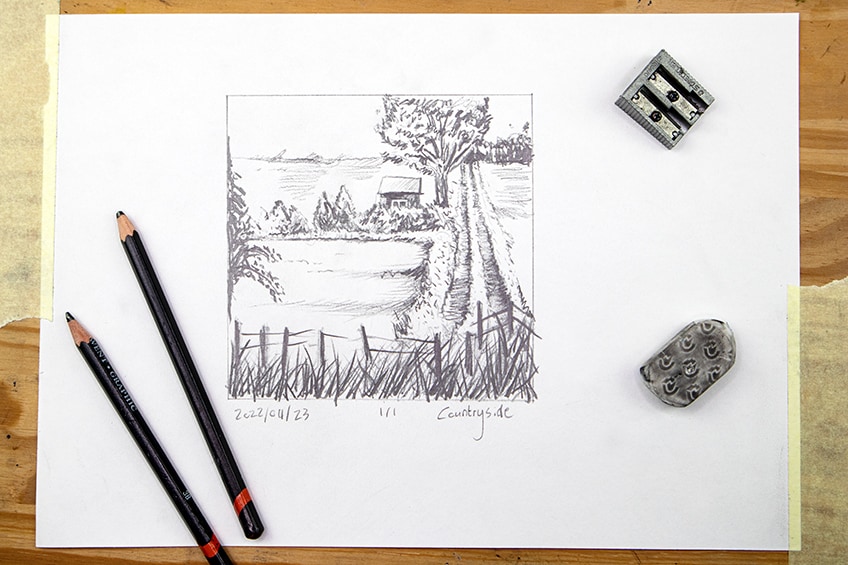
Working With a Particular Aspect Ratio
Using different aspect ratios is a fun and playful way to capture moments in time. Applying this photography-styled approach to our drawings can be a fun and intimate way to capture memories in an abstract format. We can begin by looking at a space and deciding on an aspect ratio for capturing that space in an image.
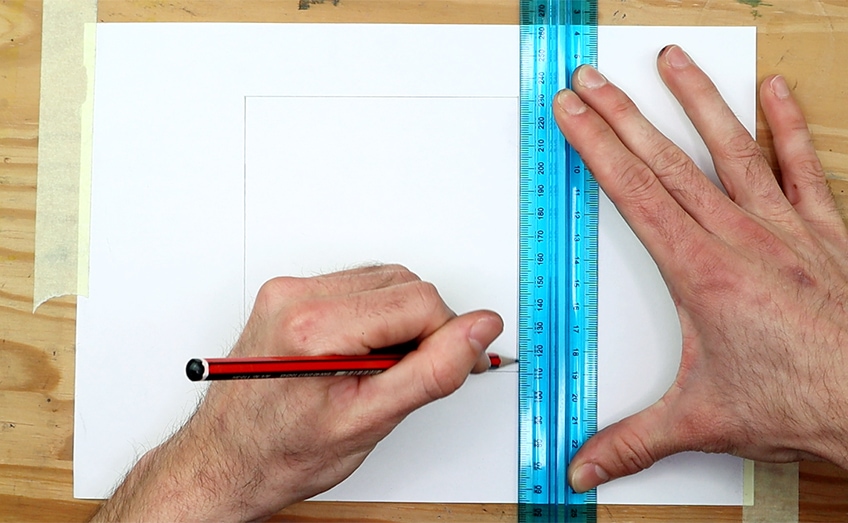
Documenting the Moment
Another beautiful part of creating a specific aspect ratio is that we are capturing a specific part of a moment in time. Other than drawing the actual space, we can also add some documentation to the image to memorialize when the space was visited.
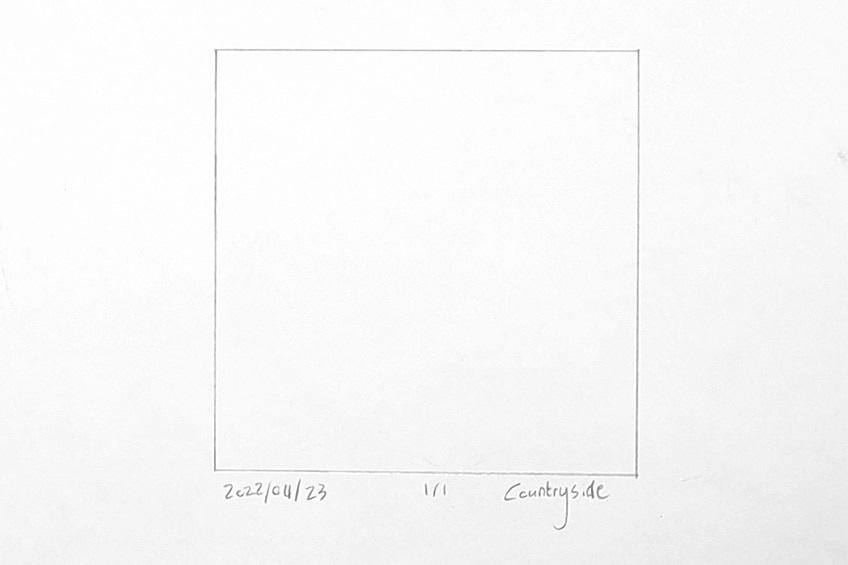
Keeping It Loose
The intention with a quick sketch is to keep it quick. This means that we want to work with capturing the basic and important aspects of the scenario. Making a quick sketch is more about capturing the essence of a space.
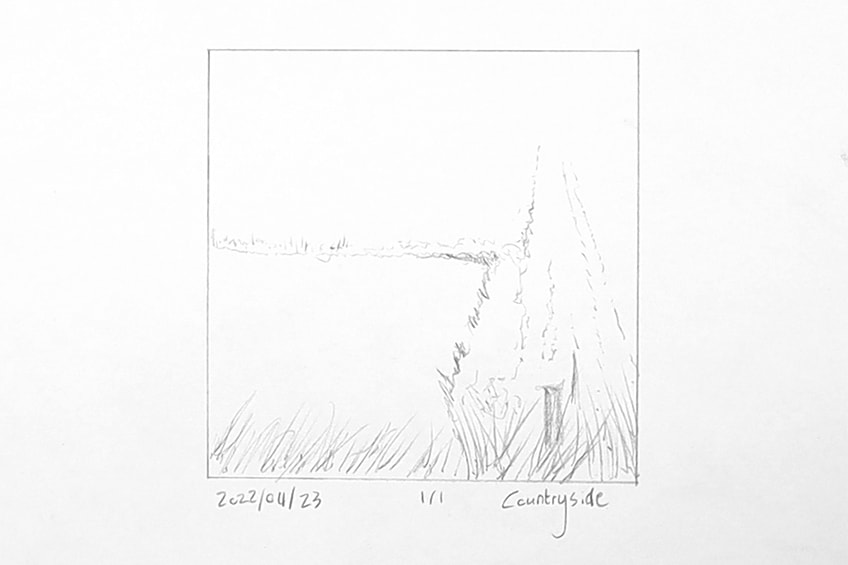
Working with a time limit is another great way to help keep the work more simplistic. The fast nature of drawing space and events gives it a more abstract and sketch-like quality. This is a great way to soften drawings as lines become more gestural than specific.
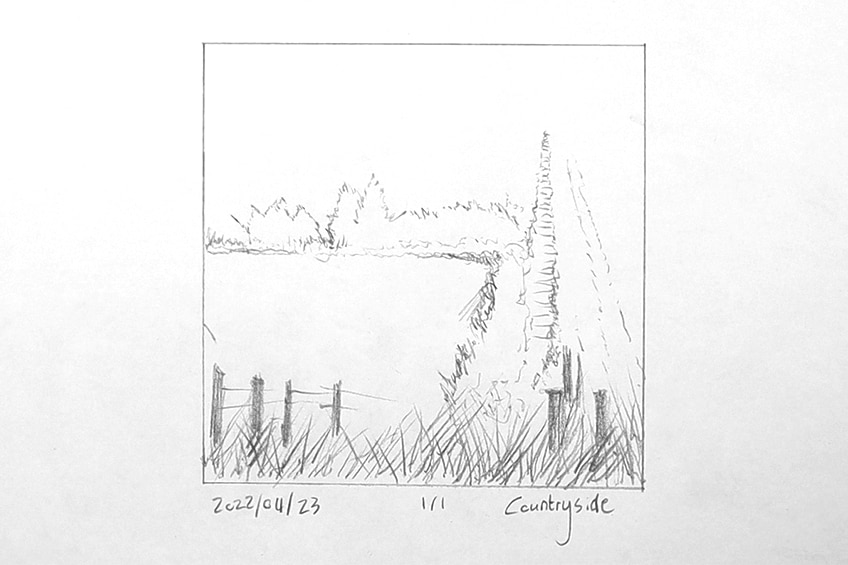
The reality is that there is no right way to draw something, and oftentimes, working with a loose method of drawing can keep things uncomplicated. In many cases, the less distinction within marks and lines, the more playful and artwork can be.
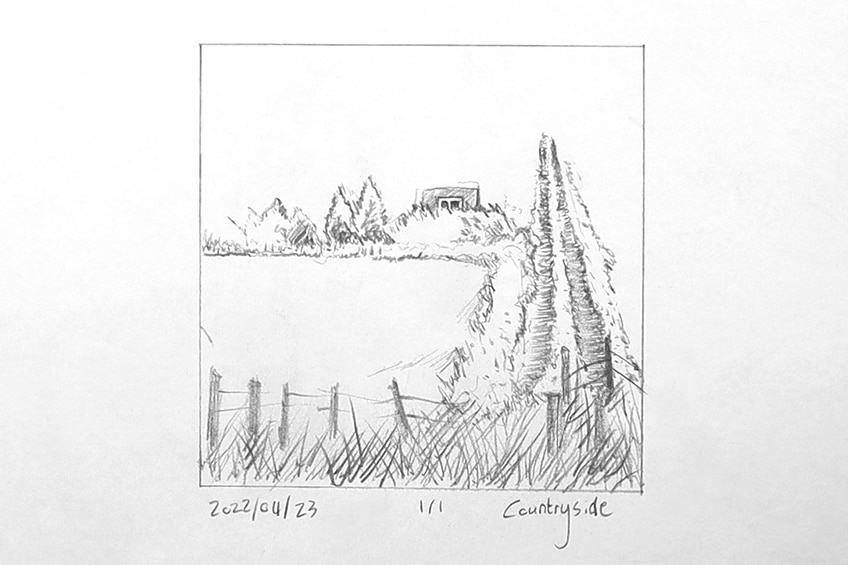
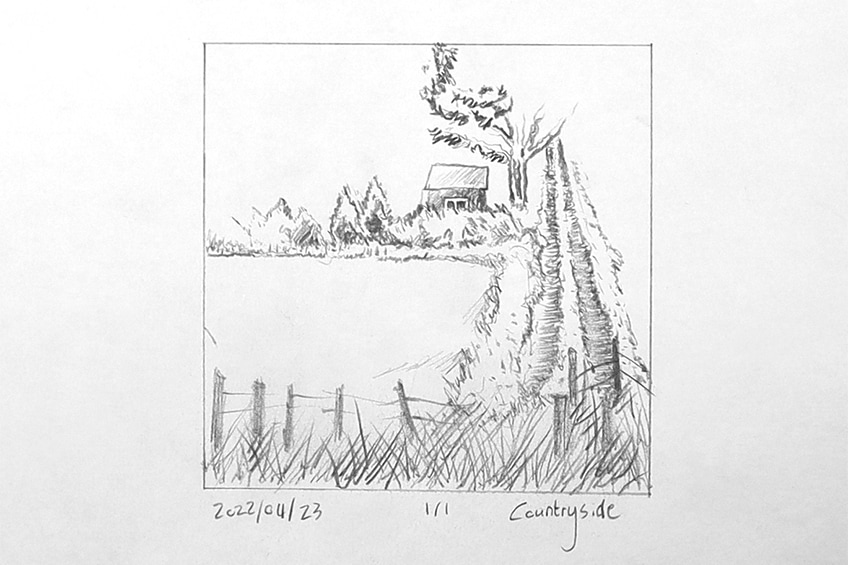
As you draw loosely and playfully, you allow the work to form itself rather than creating a specific replication of the space you are drawing. This gives the work room to form into something a little strange and becomes a beautiful abstract drawing.
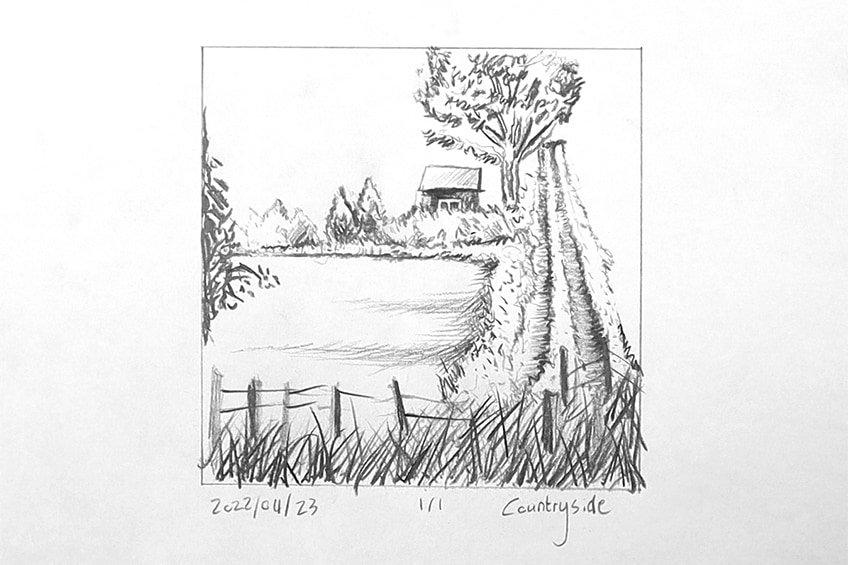
Focus on Light and Shadow
Two key principles we want to guide the drawing process are how light and shadow from within the space you are drawing. This means that shadows and light are creating moments of exposure and darkness, which gives the image dimension.
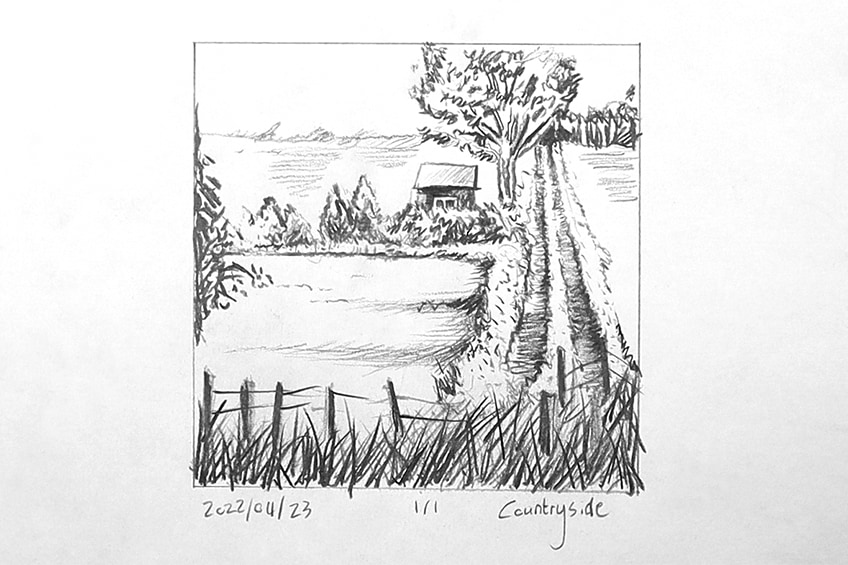
Play around with how you reprint shadow and light by the use of different shading and mark-making styles as well as how negative space fills space. Most importantly, make sure that you are not too precious and allow the drawing to unfold.
And there you have it! A few simple abstract art ideas and techniques that you can implement into your daily art practice. Each of these abstract art designs and techniques can be used in all sorts of ways, it’s just a matter of playing around with the skills you have learned.
Tips to Remember
- Be patient with the painting process. Whether it is working with masking tape for fine lines, or waiting for paint to dry, it is essential to be patient with the painting process.
- Keep your drawings loose. Don’t be too precious when creating your pencil drawings, allow the drawing to have little mistakes and unintentional marks.
- Use the techniques you have learned in different ways. In many ways, all these techniques and creative processes can be used in different ways.
- Don’t take it too seriously. Allow yourself to enjoy the process of creating something that doesn’t need to look a specific way.
As you play around with these different abstract art ideas, you mustn’t take them too seriously, abstract art designs don’t have to follow a specific process of creation. In many ways this is what makes abstract art abstract. In this tutorial, you have learned unique modern abstract painting ideas that can be used in conjunction with other painting processes. The same can be said for abstract drawing ideas, which can be used interchangeably in many ways. As long as you have fun and allow yourself to be creative, you will have a good time.
Take a look at our abstract drawing ideas webstory here!
Frequently Asked Questions
How Do You Create Three Dimensions With Acrylic Paint?
Using acrylic paint is quite the same as a drawing method, which means we can follow the same principle of drawing when painting in acrylic paint. When you attempt to create a three-dimensional space, the most important thing to remember is light and shadow. These two concepts change the color of different planes that are visible within the space. Oftentimes, this results in a rule of three, which distinguishes the three dimensions. You want to make sure that whatever objects you have created within your painting, each side is different in tonal value. By making sure you have a light, medium, and dark tonal value the object will inevitably result in a three-dimensional effect. With a pencil, it’s about shading, but with painting, it is about mixing colors to achieve three different tonal values of the same color.
Should You Wait for the Watercolor to Dry When Making Layers?
Yes! When attempting the layering effect with watercolors, you want to make sure that each layer is dry before adding the next. Another important concept to remember is that you do not need to make each layer thicker than the last. Simply by layering itself, the colors that stack on top of one another will naturally get darker. This means you want to keep the layers the same in tonal value and you want to keep the wash of each layer the same in thickness to create the abstract art design of layering with watercolor paint.
How Do You Make a Landscape Drawing Abstract?
When creating abstract landscapes, we want to focus on the concept of vague observation. This means that, if we were to have a focused observation, we will inevitably want to capture the finer details of a landscape. However, when we keep our observation approach vaguer, we intend on capturing the essence and vague shapes of a landscape. This will allow us to create space, objects, and structures that resemble the real thing rather than completely replicating them in a drawing. another suggestion is to keep your hand lightly on the pencil, making your drawing less sharp and more fluid. Lastly, another good suggestion is to intentionally scribble details of a landscape that has a beautiful abstract quality to it.
In 2005, Charlene completed her Wellness Diplomas in Therapeutic Aromatherapy and Reflexology from the International School of Reflexology and Meridian Therapy. She worked for a company offering corporate wellness programs for a couple of years, before opening up her own therapy practice. It was in 2015 that a friend, who was a digital marketer, asked her to join her company as a content creator, and this is where she found her excitement for writing.
Since joining the content writing world, she has gained a lot of experience over the years writing on a diverse selection of topics, from beauty, health, wellness, travel, and more. Due to various circumstances, she had to close her therapy practice and is now a full-time freelance writer. Being a creative person, she could not pass up the opportunity to contribute to the Art in Context team, where is was in her element, writing about a variety of art and craft topics. Contributing articles for over three years now, her knowledge in this area has grown, and she has gotten to explore her creativity and improve her research and writing skills.
Charlene Lewis has been working for artincontext.org since the relaunch in 2020. She is an experienced writer and mainly focuses on the topics of color theory, painting and drawing.
Learn more about Charlene Lewis and the Art in Context Team.


